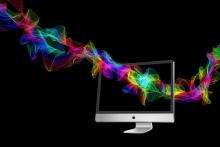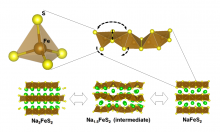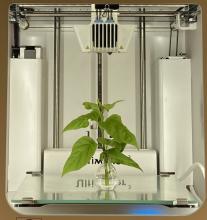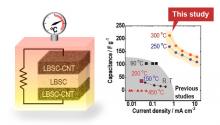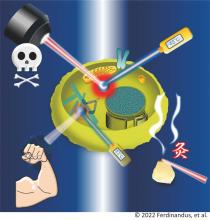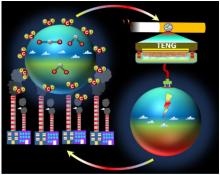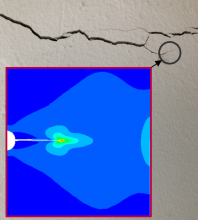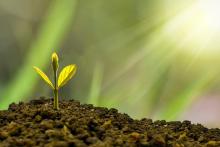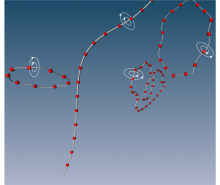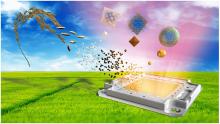Engineering & Technology Materials Science and Engineering
News
14 Oct 2022
A new material is set to provide us with faster and higher resolution displays. Hokkaido University researchers could explain what makes this material so special, opening the door to its application and further development.
11 Oct 2022
Researchers at The University of Tokyo simulated fractures in amorphous materials due to both cyclic fatigue and constant stress using course-grained dynamics, and demonstrated various failure modes, which can help improve reliability of materials
11 Oct 2022
Osaka Metropolitan University scientists have successfully developed a new positive electrode material Na2FeS2, consisting of sodium, iron, and sulfur. During testing, batteries using the Na2FeS2 positive electrode had a high energy storage capacity and could be charged and discharged for more than 300 cycles. Because the Na2FeS2 is made of abundant inexpensive elements, it is expected to be used in all-solid-state sodium batteries with higher capacity and lower costs.
01 Oct 2022
A joint group of researchers has successfully developed a method to recycle agriculture waste, namely pineapple leaf fibres, for making filaments that can be used for 3D printing of parts.
20 Sep 2022
A research group led by the Institute of Industrial Science, The University of Tokyo, finds that sensory neurons in human skin modulate melanocytes via the secretion of Repulsive Guidance Molecule B
29 Aug 2022
Tohoku University scientists in Japan have developed a mathematical description of what happens within tiny magnets as they fluctuate between states when an electric current and magnetic field are applied. Their findings, published in the journal Nature Communications, could act as the foundation for engineering more advanced computers that can quantify uncertainty while interpreting complex data.
19 Aug 2022
A research group led by Professor Akitoshi Hayashi at the Osaka Metropolitan University Graduate School of Engineering has successfully developed a high-capacity capacitor, an energy storage device—using a solid electrolyte with high deformability—that can operate at high temperatures. With this discovery, high-capacity capacitors can now be made which do not require cooling, this increases their efficiency and allows for new suitable applications.
08 Aug 2022
Researchers at Kanazawa University report in ACS Nano the development of a nanoparticle that acts as a heater and a thermometer. Inserting the nanoparticle in living cells results in a heat spot that, by switching it on and off, enables the controlled modulation of local cellular activities.
23 Jul 2022
Researchers create 'time machine' to study ancestor galaxies, Robotics engineers pay attention to matters of the heart, Custom suits for delivery worms, Tough, light structures with superior impact resistance and Virtual training can reduce stress and anxiety. Read all in the July's Editor's Choice plus op-ed: To boost South Korea’s basic science, look to values, not just budgets, this month's Image & Asia Research News 2022 magazine pick - Better memristors for brain-like computing.
19 Jul 2022
A research group has successfully synthesized a ‘half-metal’ material, achieving a rare feat in the pursuit of zero magnetization. The new material will enhance the performance of electronic devices thanks to the unique behavior of its spin.
18 Jul 2022
An international team of scientists from India and Singapore has successfully developed a novel method to recycle waste cigarette filters for use in making the triboelectric nano generator, a clean energy generating device.
07 Jul 2022
A novel practical way of modelling cracking and toughening of fibre composite materials has been developed. The novel approach also revealed new insights on the fracture behaviour of fibres reinforcing a composite laminate during intralaminar cracking. The new way can be used to complement inspection of laminated structures that are used as primary structures in many industries.
30 Jun 2022
Researchers at Kanazawa University report in The Journal of Physical Chemistry Letters how to simulate 3D atomic force microscopy images of out-of-equilibrium systems involving biomolecules. The approach makes use of a celebrated equation from thermodynamics applicable to non-equilibrium situations.
27 Jun 2022
Scientists at Tokyo Medical and Dental University have discovered a new type of bone repairing material that could be used to more precisely fix bone defects.
25 May 2022
A model that rapidly searches through large numbers of materials could find sustainable alternatives to existing composites.
16 May 2022
Researchers from the Osaka Metropolitan University Graduate School of Engineering have successfully developed a new technique allowing them to observe gas molecules packing into metal-organic frameworks (MOF) using infrared spectroscopy. Their innovation was to measure polarized light absorption of guest molecules in a MOF film to deduce molecule alignment using this common piece of lab equipment. This method is the first to show guest alignment and does so in real-time, while using an accessible and easily adoptable experimental setup. A short video (4 min) recreating their spectrometer modifications can be found in the Reference section.
12 May 2022
Researchers at Osaka Metropolitan University and Osaka University used numerical simulations to confirm observations of quantized vortices in superfluid helium using silicon nanoparticles, improving understanding of quantum fluids and superconductors.
06 May 2022
2.5-dimensional materials promise new applications for artificial intelligence, electronics, automobiles and the energy sector.
20 Apr 2022
Tile patterns in which the same shape is laid out without gaps are found in the compound eyes of insects. Hexagonal tile patterns are common while shrimp eyes have a square pattern. We investigated tile pattern formation using Drosophila and revealed that the compound eye tile pattern is controlled by a geometrical division mechanism, Voronoi tessellation, in addition to physical constraints determined by the combination of the regular distribution and growth of the individual eyes.
18 Apr 2022
An international team of researchers from India and Singapore has successfully developed a novel coating with enhanced water repellent properties using natural material from the waste crab shell.
11 Apr 2022
Milling rice to separate the grain from the husks, produces about 100 million tons of rice husk waste globally each year. Scientists searching for a scalable method to fabricate quantum dots have developed a way to recycle rice husks to create the first silicon quantum dot LED light. Their new method transforms agricultural waste into state-of-the-art light-emitting diodes in a low-cost, environmentally friendly way.
10 Apr 2022
A multidisciplinary international team of researchers, led by Professor Shukur Abu Hassan, offers new insights about how the load-uptake capacity in a novel hybrid fiber reinforced polymer composite materials can be enhanced.
10 Apr 2022
A team of materials researchers from India, Thailand, Malaysia, China and UK has successfully produced a fibre reinforced polymer composite material using natural fibres from the coconut stalk.
10 Apr 2022
Malaysian and UK medical device and composite materials experts have partnered up to research into using natural fibres for prosthetic limb technology to lower the cost of the prosthesis
07 Apr 2022
With the enhancement of Freeform Liquid 3D Printing, engineers and designers are now able to fabricate more intricate, yet stronger 3D printed soft robots.
04 Apr 2022
Scientists have found a common substance that can reversibly and rapidly store and release relatively large amounts of low-grade heat without decomposing. The research could lead to more efficient reuse of industrial waste heat.
07 Mar 2022
A magnetic hybrid system generates electricity day and night with radiative cooling and solar heating.
03 Mar 2022
A quick, cost-effective approach improves the accuracy with which machine learning models can predict the properties of new materials.
02 Mar 2022
A nanoparticle’s size is fine-tuned to offer high-resolution images before and during surgical procedures.
Events
Sorry, nothing coming up for this discipline
Researchers
Sorry, nothing coming up for this discipline
Giants in history
Sorry, nothing coming up for this discipline



